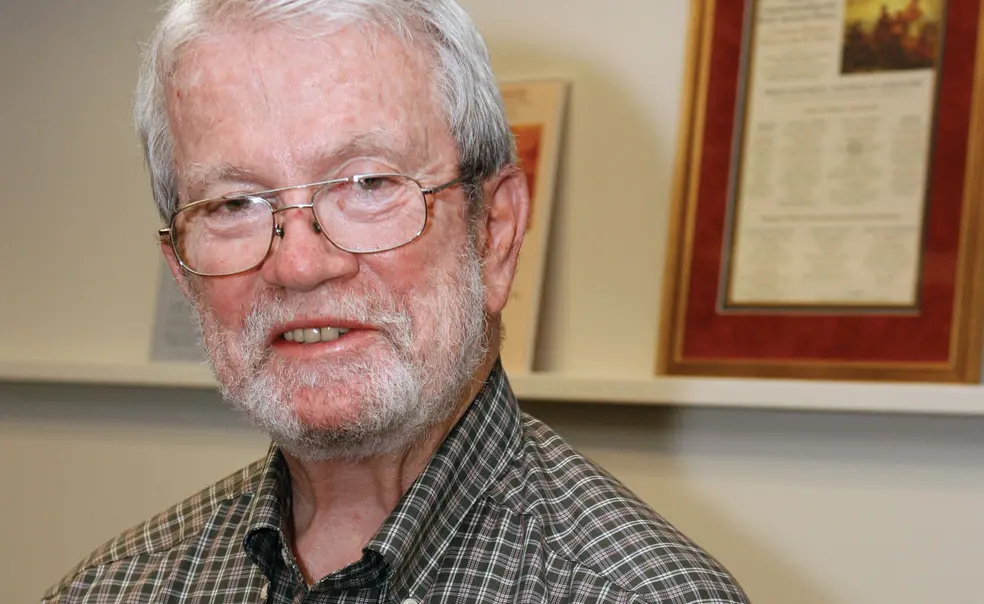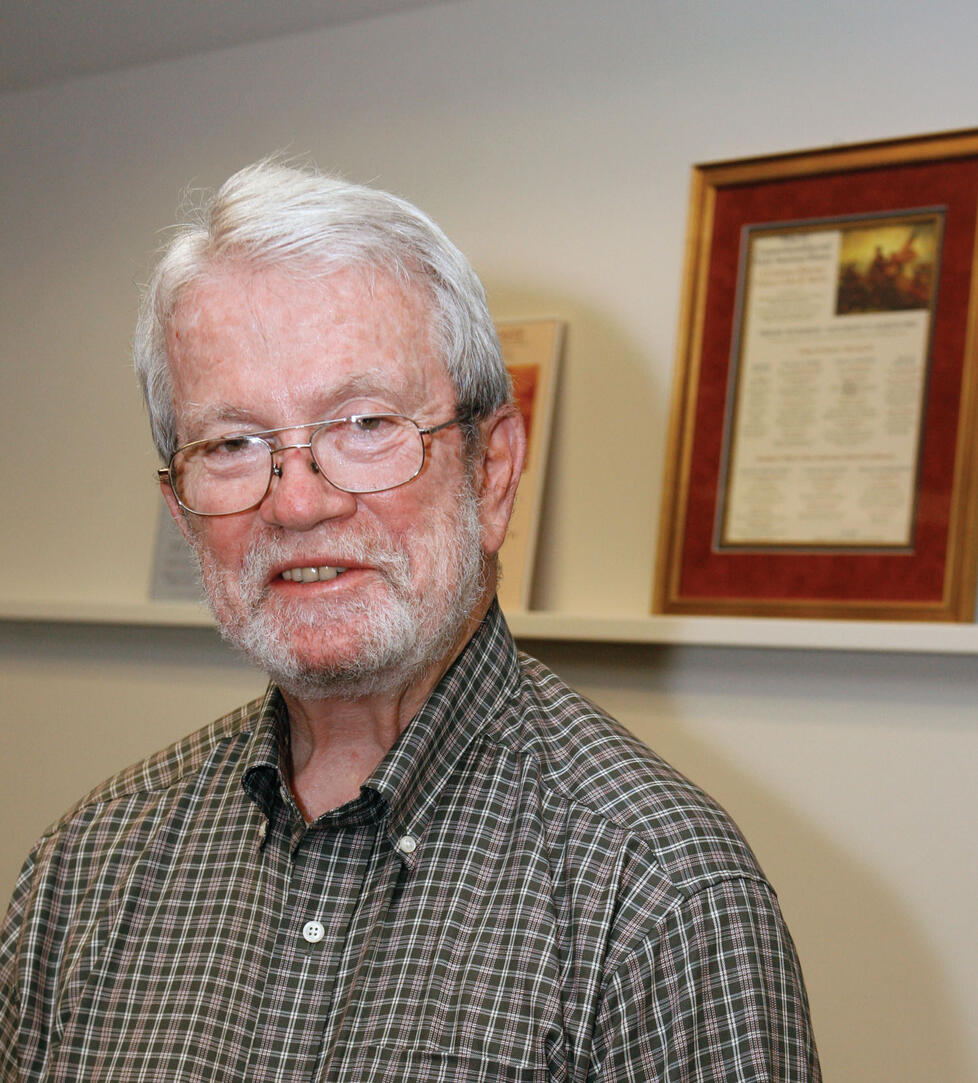A moment with...John Murrin
Before retiring in 2003, Professor John Murrin spent 30 years in the Princeton history department, where he specialized in the history of Colonial and Revolutionary America. Murrin gave a Reunions lecture to mark the 225th anniversary of the four-plus months the Continental Congress met in Princeton in 1783, after departing Philadelphia in fear of Continental Army soldiers who were incensed because they had not been paid. Murrin spoke in the very room where the Congress met — the Faculty Room in Nassau Hall — beneath portraits of early Princetonians who helped build the nation. He talked later to PAW contributor Merrell Noden ’78.
Why did Congress choose Princeton when it left Philadelphia, and what was life like for the members?
I think the main reason was because the president of Congress was Elias Boudinot, who grew up in Princeton and was a trustee of the college. [The members] certainly complained a lot. I think some of them actually stayed in Nassau Hall; others were invited in by residents of the town. Princeton didn’t have adequate accommodations.
Is it fair to say Princeton was the nation’s capital for that time?
I’d say either that it had two capitals — Philadelphia, where the executive offices still were functioning, and Princeton, where Congress was meeting — or that it was a nation without a real capital. But Congress didn’t get much of anything done while it was here. For one thing, they almost couldn’t get a quorum to do business. Under the rules of the Articles of Confederation, you had to have a minimum of seven states, and each state had to have at least two representatives. ... And for serious business, like approving a treaty, they needed nine. So any state could block it.
Did they achieve anything noteworthy?
Well, they ratified a commercial treaty with Sweden. That was in late July. It took them a month to get a quorum of nine states to do that. The definitive peace with Britain arrives in early November, and then they leave a few days later and go to Annapolis, and it takes them a long time to get a quorum of nine there to ratify the treaty. By then, the technical deadline for ratifying it has already passed, and Congress is so broke that it can’t afford to hire a courier to carry the ratification back to Europe, and so they have to borrow the money from France and hire a British ship to carry the ratification of our independence to Europe.
Why was Princeton so heavily represented in the nation’s early political life? The Class of 1771 included not just James Madison, but Gunning Bedford Jr., a delegate to the Constitutional Conven-tion; the journalist and politician Hugh Henry Brackenridge; and poet and crusading editor Philip Freneau — among others.
They almost had Alexander Hamilton. The story is that he asked Witherspoon for junior class standing and Wither-spoon wouldn’t grant it to him, so he went to what’s now Columbia instead. Aaron Burr Jr. was Madison’s Princeton contemporary [Class of 1772]. Witherspoon is part of the reason [for the students’ Revolutionary fervor]. His students really did admire him, and he brings the Scottish Enlighten-ment to Princeton in a way that it hadn’t been there before.
When I taught the Revolution, I used to say that to the outside world the Constitutional Convention was known as the Philadelphia Convention, but we know what it really was: the first Princeton Alumni College. There were more delegates from Princeton than from any two other colleges combined. Many of them were in critical positions. Madison drew up the Virginia Plan. William Paterson [1763] drew up the New Jersey plan. Oliver Ellsworth [1766] of Connecticut, the future chief justice [of the Supreme Court], was one of those responsible for the Connecticut Compromise. And Bedford was the one who created the biggest alarm by suggesting that the small states might turn to foreign powers to get some kind of justice from the large states.
There is still great debate over whether or not ours is a Christian nation, and you can find evidence in the writing of the Founding Fathers to support both sides.
What I think you can say about almost all the Founding Fathers is that they did not want to have a fight over religion, so they would say inoffensive things. Washington seems almost always to use a euphemism for God: the “Great Designer of the Universe” or something like that. He almost never says “God.” ... But he went to church. Benjamin Franklin was probably more religious in his old age than he was as a young man, when he was certainly flirting with atheism. He’s the one who, in a critical moment in the Constitutional Convention, moves that they invite in a clergyman to lead them in prayer. Madison is the one who finally defeats that by moving to adjourn, even though it was still morning and they were supposed to have a whole day! But obviously he didn’t want to have a vote on prayer. And there were probably only about four delegates who were on Franklin’s side.













1 Response
Ken McCarthy ’81
9 Years AgoTeach school’s history
I enjoyed the interview with professor emeritus John Murrin (A Moment With, July 16) about Princeton’s role in our now-distant revolution.
It makes me think that a brief course, even if it were just a few hours long, on the early history of the school should be mandatory for all freshmen. It would add to their appreciation of the place and might even be inspiring.
For example, I doubt many alumni know that Princeton was the first institution of higher learning in America that was founded free of the domination of a religious denomination. This was the innovation of the school’s founding president, Jonathan Dickinson, who was opposed to the religious conservatism that characterized the three colleges that preceded Princeton — Harvard, Yale, and the College of William and Mary.
By the way, no one attended “Prince-ton” until 1896. From its charter in 1746 until that date, “Princeton” was the College of New Jersey.
And, as much as the school seems to feel the need to obscure this, Prince-ton’s roots are in Elizabeth, N.J. The school’s real birthplace (Nassau Hall was not functional until 1756) stands in downtown Elizabeth looking very much like it did 262 years ago, sadly unmarked and uncelebrated, a singular case of historical amnesia.